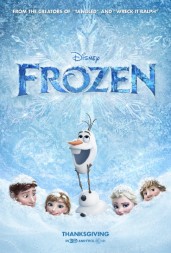Based loosely on Hans Christian Andersen’s The Snow Queen, Disney’s Frozen (2013) joins Mulan (1998), The Princess and the Frog (2009), Tangled (2010), and Brave (2012) in redefining the princess archetype through a twenty-first century feminist lens. Critical theory aside, the film alludes to current global climate and energy concerns.
As we exit a period of near-record low temperatures nationwide due to “polar vortex distortion,” it may feel like the major plot complication of Disney’s Frozen left the silver screen and visited us in the physical world. At her summertime coronation, young Queen Elsa of Arendelle, voiced masterfully by Idina Menzel, loses her temper with her younger sister, Anna, voiced by Kristen Bell, provoking an eternal winter.
Frozen’s release in November 2013 was strikingly coincidental with the 2013 United Nations Climate Change Conference in Warsaw, Poland. As in previous years, negotiations centered on the reduction of global emissions through the transfer of clean energy technologies and capital from the richest to the poorest nations. Major players in ongoing discussions include small, developing island nations and developed countries, which are already heavily invested in resource extraction.
While not focusing on energy issues or real-world climate change, subtle references to contemporary fears and issues establish Frozen as a definitive snapshot of the current global climate debates and underlying energy issues. Prince Hans represents small island nations threatened by rising seas struggling for a voice in climate change debates. The Duke of Weselton symbolizes economically developed nations struggling to retain global leadership in the face of rapidly shifting energy markets. Queen Elsa and her chilling powers personify the worst-case scenarios of severe climate change. And, like the real world, the high-stakes negotiations are tinged with some misunderstandings, suspicion, corruption, and the risk of failure.
Energy elements and narrative aside, Frozen is worth a viewing just for the visually stunning blend of amorphous and crystalline animation of winter landscapes.



 Hydropower Saves The Fugitive
Hydropower Saves The Fugitive